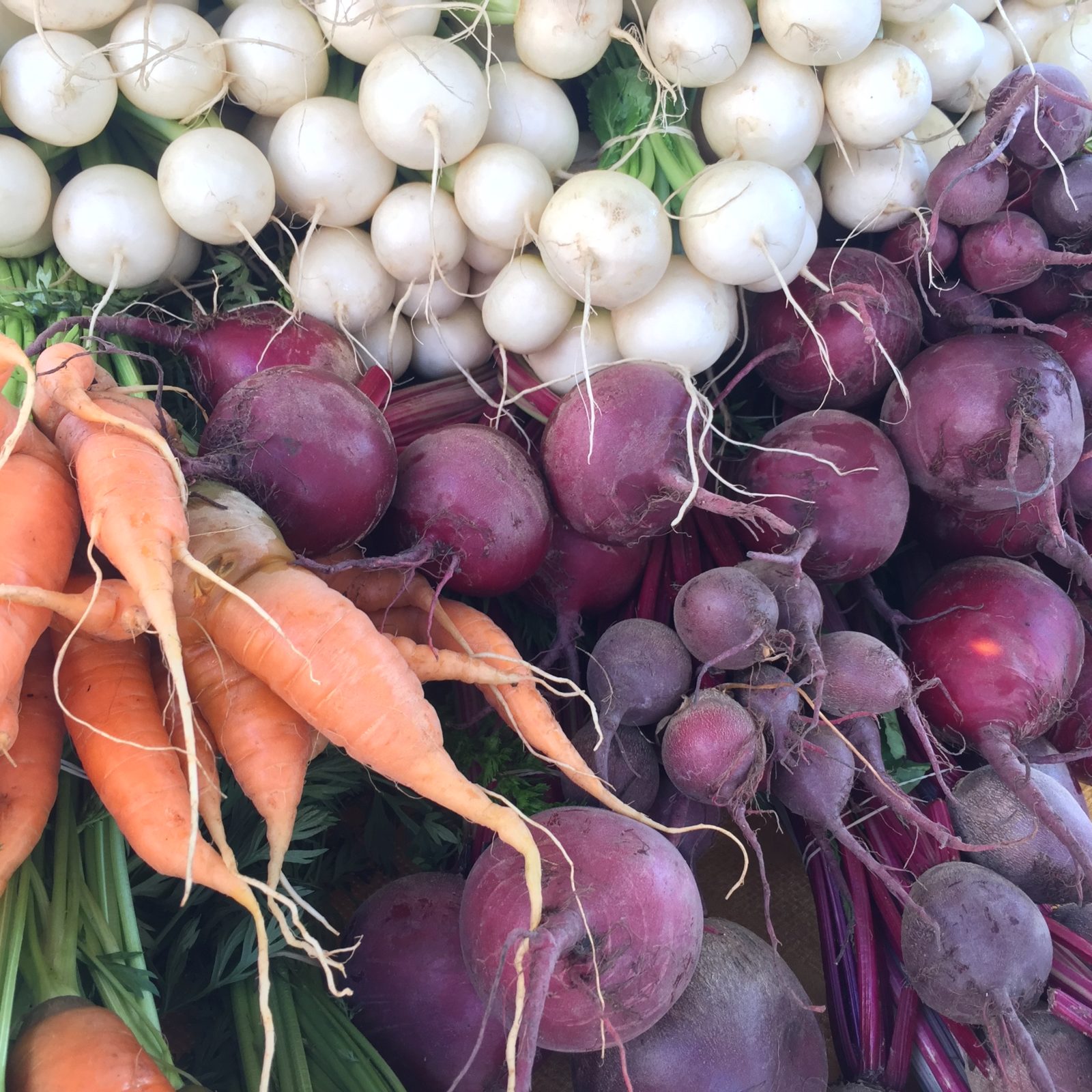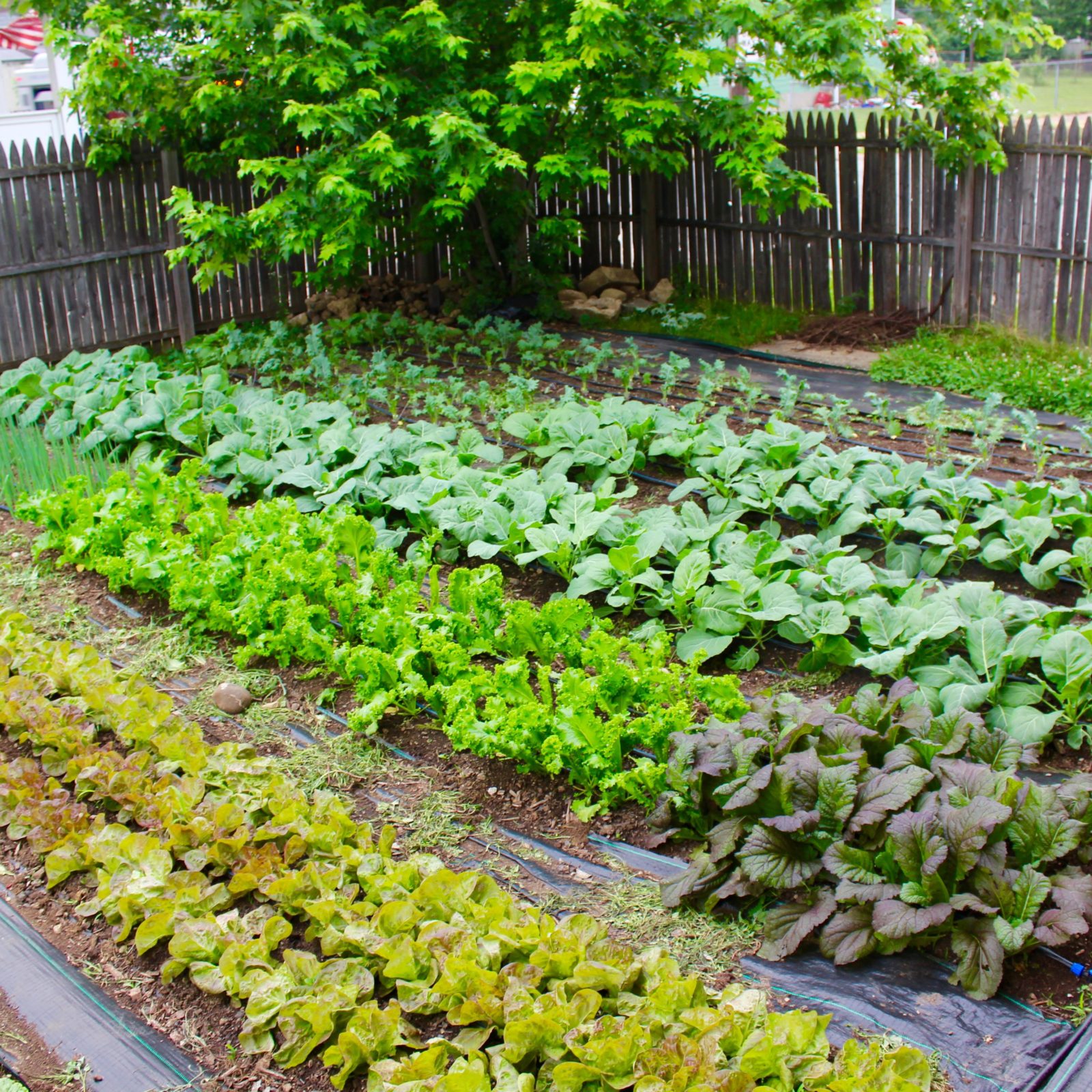How Franklinton Farms feeds a neighborhood, grows a community

In West Town Street, a microgreen operation thrives in the most unlikely of places: the corner of a first floor office suite of a nondescript building.
Near the sunflower, broccoli, kale and radish starts, colorful art hangs on the walls, shovels occupy corners, and fluorescent lights reflect intensely off of a stainless steel produce washing station.
Previously a dental practice, the smell of earth now permeates the space. An apprentice sits at a table reading Walt Whitman during a shift break on a cold winter day.
These are the headquarters of Franklinton Farms, formerly known as Franklinton Gardens, run by a cadre of urban agriculturalists working in one of Columbus’s poorest neighborhoods.
What started as a community garden in 2007 on a lot from the City of Columbus Land Bank now encompasses a patchwork nonprofit network on 37 community parcels comprising 2.5 acres of land. The Farm has 12 high tunnels—unheated greenhouses that extend the growing season—which enable them to produce food year-round, most of which makes its way back to the neighborhood.
Decades of divestment, resulting in poverty, crime, drug addiction, and chronic illness amongst the community, has for long kept the neighborhood, located directly west of downtown, as one of lowest median household income rates in Columbus. A significant portion of the population is enrolled in federal nutrition assistance programs. A food desert with no neighborhood grocery store, many community members rely on corner markets, often lacking fresh produce, for their food.
To compound the problem, nearly 30 percent of residents lack a vehicle, and traveling by foot or bus to a grocery outside of the neighborhood is time-consuming.
Franklinton Farms is rooted in the notion that healthy, sustainable and accessible food has the power to transform a community.
“We are trying to build a holistic and engaged food system in the neighborhood,” says Nick Stanich, Executive Director of the organization. “Coming together around food can be a solution to a lot of the dysfunctional issues in this chronically impoverished neighborhood.”
The nonprofit is building innovative new models of food distribution to make fresh produce accessible to the community. Through their produce basket program, targeted at those who live or work in Franklinton, the Farm distributes fruits and vegetables directly to members’ doors each week during the growing season.
Half of the program’s shares are reserved for participants who self-identify as low income and are offered at a portion of the cost through a grant provided by the U.S. Department of Agriculture.
The farm also operates a mobile market with product lists emailed to community members weekly. Produce can be ordered a la carte and is delivered directly to a purchaser’s door.
Like the produce basket program, low-income individuals pay only a portion of the price and payment can be made via nutrition assistance programs. On the day that I visit, Nick meets me in the nonprofit’s office suite before we embark on a tour of the farm. While we walk down Town Street, a woman in her nightgown on her front porch calls out to Nick and it’s obvious that they know one another.
“Hey, how you doing?” he yells back.
Throwing her hands in the air, she informs Nick that her roommate was just admitted to Mount Carmel Hospital, a few blocks away, with a diagnosis of stomach cancer.
We continue on Town Street where Nick shows me the Farm’s learning garden, located near Avondale Elementary School and built with grant funding. Almost complete, the space’s perimeter will be encompassed by flowers during the growing season. Inside, community members will find programming on gardening and food production.
As we progress to farm-occupied plots on Rich Street, Nick points out a solar array under construction. The array will power the house it sits atop, owned by the farm and where some of their farmworkers live. The organization also plans to power a shipping container sitting next door with the array. The container has been retrofitted to hold harvested produce. Nick tells me that the farm just received a citation from the city for the container despite the fact that it’s sat in that same spot for the last eight years.
The citation is a palpable sign of the change underway in Franklinton, which has been eyed by public and private entities as ripe for development. With 21 acres of land on the Scioto Peninsula currently slated for residential, hotel, retail and office expansion, Franklinton is undergoing a radical transformation.
“Land prices are shooting up like crazy,” Nick says. He points to two parcels of land on Town Street noting, “Empty, undeveloped parcels would normally never sell for more than $5,000 apiece. Those just sold for more than $50,000 each a couple of months ago.”
Of the 37 parcels of land affiliated with Franklinton Farms, the organization only owns three. They have annual leases on 27 and are growing on seven that have been loaned to them by friends under no formal contract.
“We don’t have much in the way of land security and that’s a big issue,” Nick says. “If we are going to sustain ourselves and be here in ten years we have to figure out how to buy land. Tenant farming in backyards doesn’t give us the benefit of investing in an agricultural landscape over decades.”
Later, we pass one of the farm’s trucks. The glass in the back window has been broken. A cat peeks out at us from the newly formed hole. Despite his frustration, Nick chuckles.
“This is Franklinton,” he says.
By Nicole Rasul / Stock & Barrel March, 2018
BROUGHT TO YOU BY









